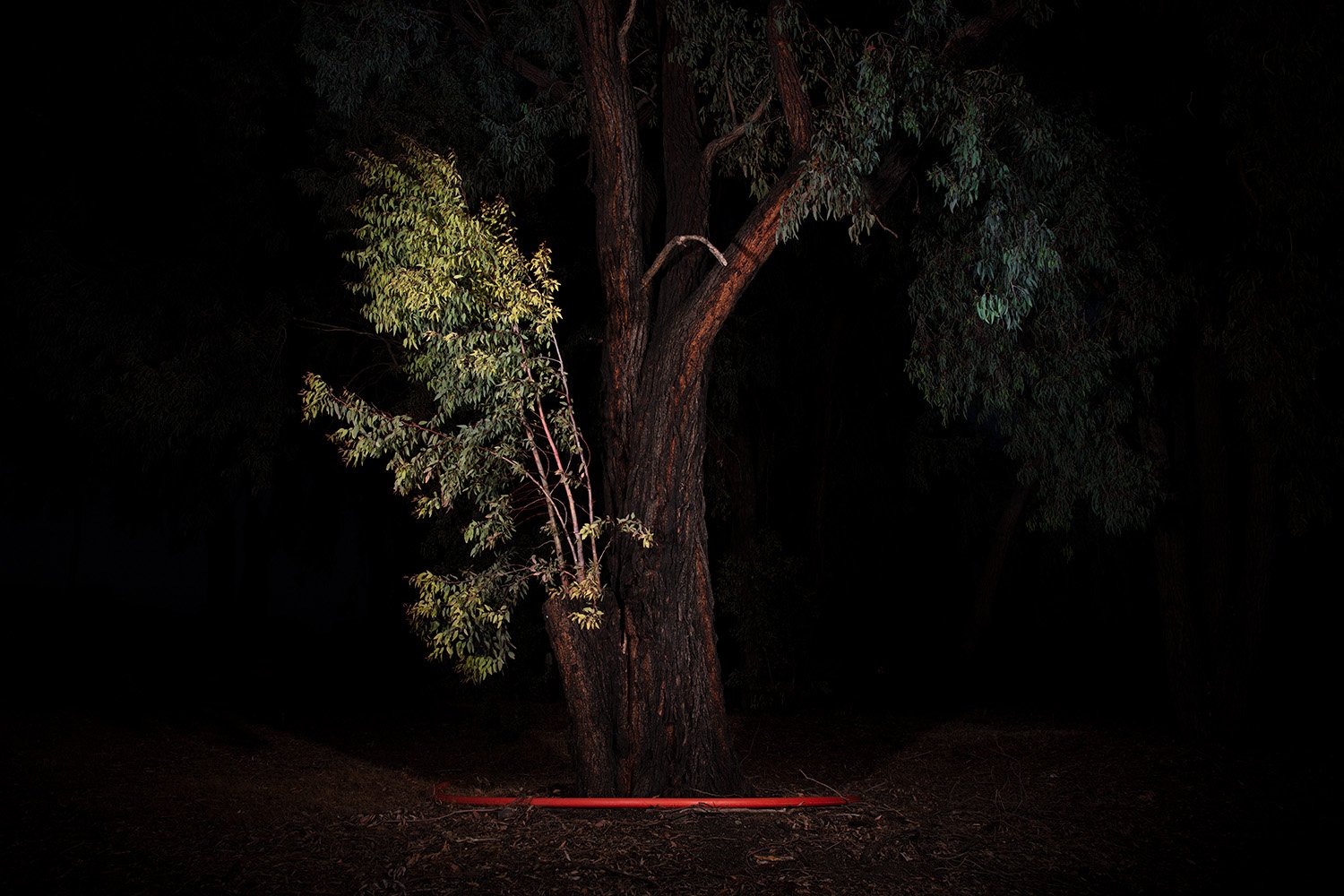
its own pristine devices
its own pristine devices (2019-current)
The United States interstate system is comprised of 46,876 miles of highways, enough to circle Earth almost twice. Within this massive and complex system of roadways, there are exits and entrances giving passage to people, goods, and services while carving many different shapes (clover-leaf, round-about T, parclo, ¾ volley, partial- Y, half-trumpet, diamond, dumbbell, dogbone, etc.) into the landscape. As I navigate these curvy structures and my beat-up Hyundai’s headlights illuminate the curious spaces, I began to wonder about these freeway “islands.” Appearing as an afterthought or by-product, freeway islands are intentionally designed spaces with a function: they serve as detention ponds for both precipitation and road/vehicle-created pollution. Unintentionally, some of these spaces have become complex mini-habitats, completely surrounded by off-ramps, freeway, roads, and rushing cars. In photographing these locations, I am consciously aestheticizing these forgotten or un-appreciated spaces. Through the act of looking I am asserting value and acknowledgement.
In, “The Trouble with Wilderness; or, Getting Back to the Wrong Nature” William Cronon argues for the need to redefine our strong notion of wilderness:
“The more one knows of its peculiar history, the more one realizes that wilderness is not quite what it seems. Far from being the one place on earth that stands apart from humanity, it is quite profoundly a human creation—indeed, the creation of very particular human cultures at very particular moments in human history. It is not a pristine sanctuary where the last remnant of an untouched, endangered, but still transcendent nature can for at least a little while longer be encountered without the contaminating taint of civilization. Instead, it is a product of that civilization, and could hardly be contaminated by the very stuff of which it is made.” (Cronon 69)
Our romanticized notions of the pristine wilderness or virgin land as untouched and uninhabited are incongruent with its fraught history of colonization, the frontier, and the relocation and genocide of indigenous peoples. Cronon breaks down this constructed myth of wilderness and challenges people not only to see the preserved and curated spaces for what they are but to also find wildness in our backyards, abandoned lots, and local parks, to which I would extend to freeway “islands.”

Ramp I-894 W/US-45 N, Beloit Road, Greenfield, WI. 2021

Exit 5A, I-43S, Forest Home Avenue. Greenfield, WI. 2021

Ramp 175S, ALois Street. Milwaukee, WI. 2021

Exit 14B, CA-24E, Pleasant Hill Rd. Lafayette, CA. 2020

Ramp 175N, 46th Street. Milwaukee, WI. 2019

Ramp 405N, Sherman Way. Van Nuys, CA. 2019

Installation view at OS Projects in Racine, WI (2024).

Installation view at OS Projects in Racine, WI (2024).

Exit 275, I-40E, Rte 66, Santa Rosa, NM. 2021

Exit 314B, I43S, W Howard Avenue. Milwaukee, WI. 2021

Exit 2A, I-41S, National Avenue, West Allis, WI. 2021

Ramp I-894 W/US-45 N, Beloit Road, Greenfield, WI. 2021

Ramp I-41S, National Avenue, West Allis, WI. 2021

Ramp 175N, 46th Street. Milwaukee, WI. 2019

Exit 168, Hwy 5, McBean Parkway. Santa Clarita, CA. 2019

Exit 2A, I-41S, National Avenue, West Allis, WI. 2021

Ramp 175N, 46th Street. Milwaukee, WI. 2019

Ramp 5S, McBean Parkway. Santa Clarita, CA. 2019

Ramp 175N, 46th Street. Milwaukee, WI. 2019

Ramp I-41S, National Avenue, West Allis, WI. 2021

Exit 78, I-43N, Silver Spring Drive. Glendale, WI. 2021

Exit 5A, I43S, Forest Home Avenue. Greenfield, WI. 2021

Exit 5A, I43S, Forest Home Avenue. Greenfield, WI. 2021

Ramp 175N, 46th Street. Milwaukee, WI. 2019
